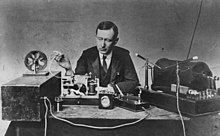Choosing the Best International Cell Phone Service for You | |
 | Use the information in this article to understand and choose which is the best strategy for you to get international cell phone service. Bottom line - there is no perfect solution. Not today. This will improve, just the same way that domestic roaming improved in the second half of the 1980s. |
| |
There are essentially four different options available to you for cell phone service while traveling internationally.
Each has some pluses and minuses, and none of them are a 'perfect' one size fits all solution for everyone.
This article summarizes the differences and then helps you choose which is best for your needs.
Option 1 : Using Your US GSM Service
If you have already have a GSM phone that you use in the US (T-Mobile, Cingular, and some AT&T phones) and if the phone is a 'tri-band' international phone, then you can probably use your current phone internationally.
Often you will find that you may need to ask the phone company to update your account to allow for international roaming, but once you've done that, you can then use it in a foreign country as easily as in the US.
This is probably the most costly option if you use your phone much while traveling, but if you don't use it, then there is no extra cost involved at all.
Option 2 : Renting a Phone and Service
This is the most expensive of the four options, because you're paying for another middle man as part of the process.
Renting a phone is a sensible option if you travel very infrequently, and have no special 'power user' type needs. If all you want is an 'emergency contact' type phone that probably you'll never actually use, this is an easy solution.
If you expect to be renting a phone several times over a couple of years, it is probably cheaper and better to purchase a phone. Rental phones also tend to be under-featured; if you're wanting the latest and greatest options, you'll probably have to buy a phone rather than rely on a rental phone.
People considering renting a phone should consider the very low cost $49 Mobal product as an alternative.
Option 3 : Buying a Phone with HopAbroad, Riiing or Mobal service
If you travel internationally once a year or more, and if you visit several different countries, while not staying in any individual country for an extended period of time, and if you will use your phone from time to time, then one of these options is probably your best choice, and is the best trade-off between convenience and cost.
Because its per minute rates are usually lowest, Riiing is a better choice if you're doing a lot of calling. But Mobal is a better choice if your calls are very infrequent, because it has no minimum annual fees.
Option 4 : Buying a Phone and Individual SIMs
If you travel regularly to a particular country, and/or if you are going to be staying in one country for an extended period of time, then buying a pre-paid SIM that gives you local service for that specific country is probably your best choice, and presents as definitely the lowest cost per minute of airtime (often incoming calls might be free and outgoing local calls may be less than 20c a minute).
Using individual SIMs for each country will also probably enable you to use all the features of the local network such as data services as well as simple voice services, but make sure that the phone you're using is able to support these advanced services.
There is no reason why you can't buy half a dozen different SIMs for half a dozen different countries and change SIMs every time you change countries. The only disadvantage is that it makes it difficult for people calling you to know which number to call you at, and you have to remember many different phone numbers and be juggling many different accounts, ensuring that none of them expire or run out of credit.
Decision Matrix
Here are a series of questions, the answers to which help to suggest which would be your best strategy.
On a piece of paper, draw up four columns - one for each of the four strategies. And then, for each of the questions below, write the number of points into each column for your answer.
If the answer to a question is 'I don't know/I'm not sure/I don't care' then just skip the question entirely.
When you've answered as many questions as you can, add up the points in each column. The more points that each strategy column obtains, the more likely it is to be the more sensible solution for you.
Finally, you should do what you're most comfortable with. Use this to guide and influence your decision, but don't allow it to over-rule your personal preference.
| Question | US Svc | Rental | Hop Riiing | Mobal | Local SIM |
| Do you already have US GSM service and an international tri-band phone? | |||||
| If No, score | 4 | 4 | 5 | 4 | |
| Do you already have an international GSM cell phone (but not US GSM service)? | |||||
| If Yes, score | 5 | 4 | 5 | ||
| Do you travel internationally at least once a year? | |||||
| If Yes, score | 1 | 2 | 1 | 2 | |
| If No, score | 4 | 5 | |||
| Do you visit one country or multiple countries? | |||||
| If multiple countries, score | 2 | 2 | 2 | 2 | |
| Importance of making it easy for US callers to phone you inexpensively | |||||
| If important, score | 3 | 1 | 2 | ||
| Importance of making it easy for US callers to have only one number to remember to phone you at | |||||
| If important, score | 2 | 2 | 2 | ||
| Importance of making it easy (inexpensive and a local call) for callers in the country you're visiting to phone you | |||||
| If important, score | 4 | ||||
| Which is more important to you - a convenient solution or an inexpensive solution | |||||
| If convenience most important, score | 4 | 1 | 2 | 3 | |
| If cost most important, score | 1 | 2 | 1 | 3 | |
| Will you be using your telephone a lot while traveling | |||||
| If a lot, score | 1 | 2 | 3 | ||
| If a little, score | 2 | 2 | 2 | 2 | |
| Are you planning one visit or many to this/these country(-ies) | |||||
| If one visit, score | 1 | 1 | 1 | 1 | |
| If many visits, score | 1 | ||||
| Will you have short stays or long stays in the countries you visit | |||||
| If short stay(s), score | 1 | 1 | 2 | 2 | |
| If long stay(s), score | 1 | 2 | |||
| Do you need extra services such as data, internet access, etc | |||||
| If yes, score | 2 | 2 | 3 | ||
| TOTALS | |||||
| Question | US Svc | Rental | Hop Riiing | Mobal | Local |
Summary and Recommendation
The above table is intended as a general guide only. The relative scores we suggest for each feature may not match the importance to you of each feature. For this reason, treat the final totals as being very approximate, and feel free to rewrite the scoring to more closely match your own needs.
Additionally, if there are any 'must have' features or services that you require, you should carefully check to make sure that your preferred option can provide these for you.
Even after you've completed this research and made your choice, you're unlikely to have a 'perfect' solution. Sure, you've hopefully identified the best-for-you solution from the four imperfect alternatives, but whatever your choice, it is still going to be more expensive than it should be.
This situation will likely improve over the next few years, just the same way that domestic roaming has evolved in the US. In the mid 1980s, if you traveled to another service provider's network, you often had to set up a fresh new account, plus perhaps pay a daily roaming fee, and people had to dial very complicated special numbers to find your phone, with these numbers changing every time you moved to a different city or state. Now, domestic roaming is automatic and 'invisible' - and also affordable. Let's hope the same evolution occurs internationally, too.
Riiing the usual best choice
For most people with average requirements, and the expectation of traveling abroad at least once every year or two, the Riiing global roaming solution is perhaps the best compromise. If you travel less frequently, then the Mobal product may be more cost effective, and if you travel regularly to a few countries, or stay in selected countries for extended periods, and plan on making extensive use of your phone, then buying local SIMs are the best approach.
If you already have US GSM service, and a tri-band phone, then simply using your present phone overseas is surely the easiest answer of all. But it will quickly also become the most expensive solution if you use your phone much, and so even if you already have US service, you might want to get your phone 'unlocked' and then use a Riiing, Mobal or local SIM with your phone.


































































